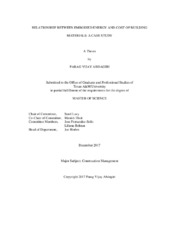| dc.description.abstract | The annual energy consumed in building construction and operation is approximately 48% of the total energy in the United States. The total life cycle energy of buildings comprises of operational energy and embodied energy. Recent research has emphasized the significance of embodied energy and has acknowledged its relative proportion of total energy, which is growing with the emergence of more energy efficient buildings. Embodied energy is the energy utilized by building materials during production, on-site processes, and demolition and disposal. Buildings use following two types of energy consumption: Direct Energy and Indirect Energy. Lack of globally accepted embodied energy calculation method is a hindrance to establish complete and consistent embodied energy database.
The methodologies typically used for EE calculations can be classified into three types: process-based, input-output based and hybrid of these two methods. For process-based, The process starts with taking building material as a final product and works backward in upstream process, taking into account all possible direct energy inputs. Input-output based analysis is top-down approach which contains direct requirement coefficients from an economic input-output model. Hybrid analysis consists combining advantages of two methods to eliminate fundamental errors and limitations of process and input-output analysis. The current input-output hybrid methods lack specificity and reliability. Therefore, input-output hybrid model suggested by Dixit was used which focuses on sectoral disaggregation of industry sectors to increase the specificity of results.
As economic activity is used to calculate embodied energy, there exists a relationship between embodied energy and cost. Various studies suggest a strong positive correlation between embodied energy and cost of building. Meanwhile, the strength of correlation decrease at material level. This study focused on finding the relationship between embodied energy and cost of building materials using the input-output model suggest by Dixit.
After regression analysis, the strength of correlation between embodied energy (MBTU) and cost of building materials ($) was found to be strong and positive. For embodied energy per unit mass (MBTU/Kg) and cost per unit mass ($/Kg), the correlation was found to be very strong and positive. | en |


